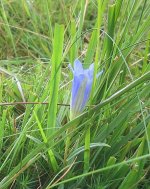Kathpeter
OLD..BOLD..AND PAST THE USE BY DATE
My mentor once took me to search for this rarity many years ago. I have returned on a couple of occasions to the same location but sadly never had any further luck. As a result this location in North York's is the only one in the country I know of. The question here for the experts is......1) how rare is the Marsh Gentian and 2) where else can it be found.
Apologies for the mis-spelling in the title.
Pete.
Apologies for the mis-spelling in the title.
Pete.
Attachments
Last edited:




